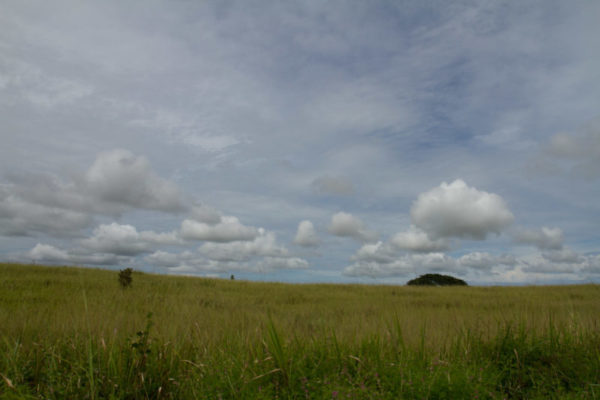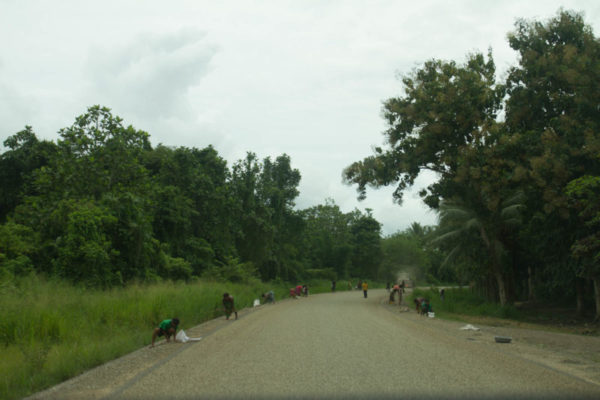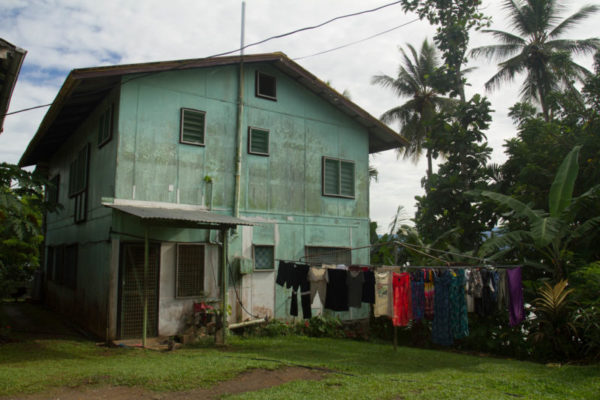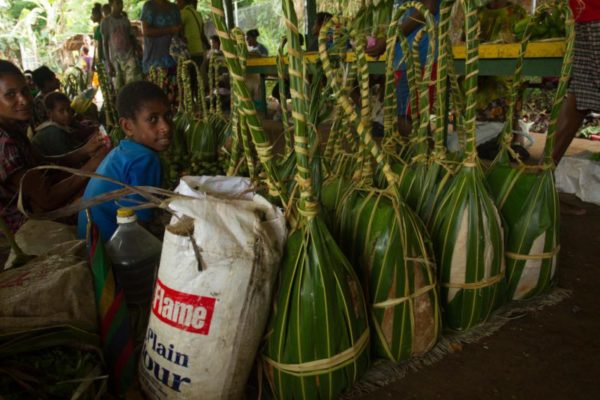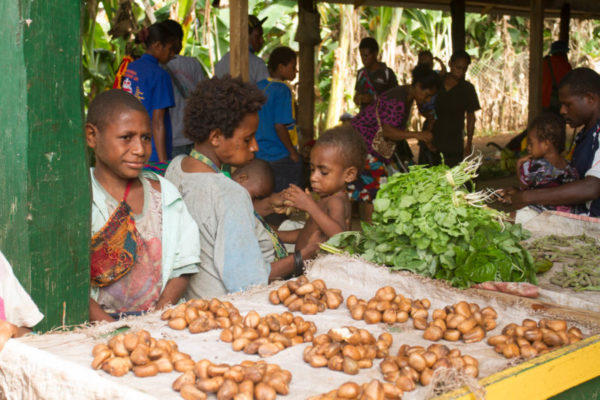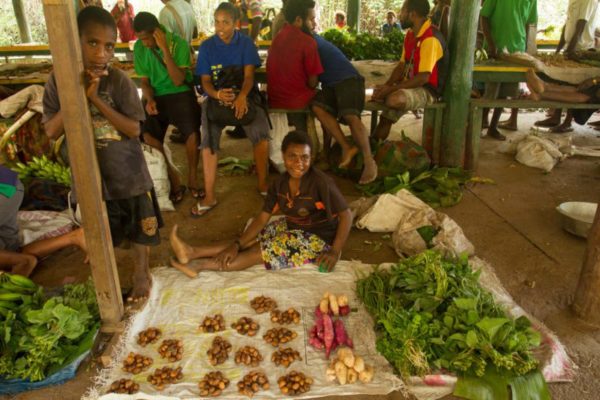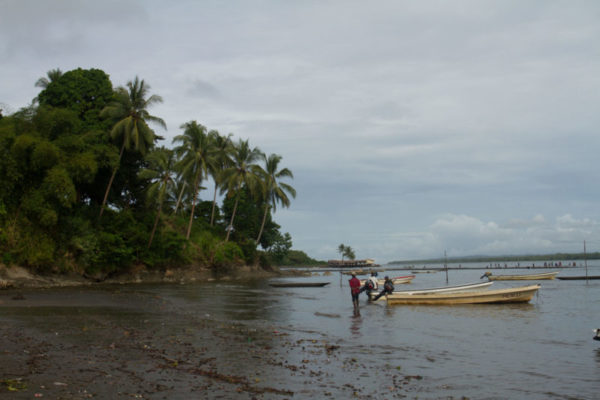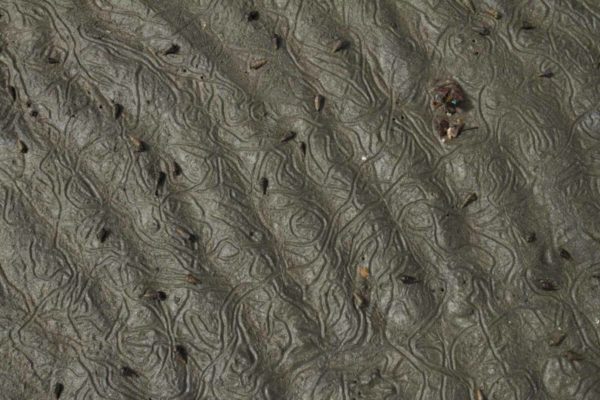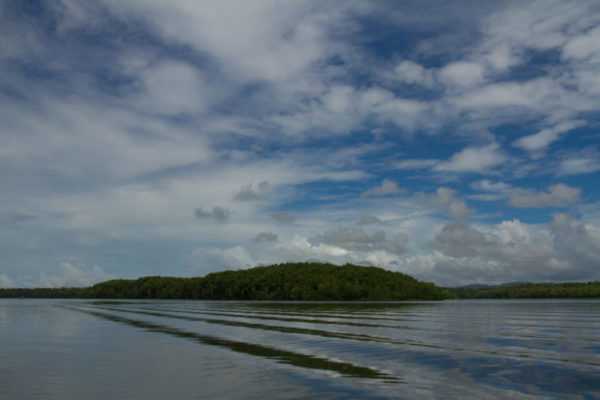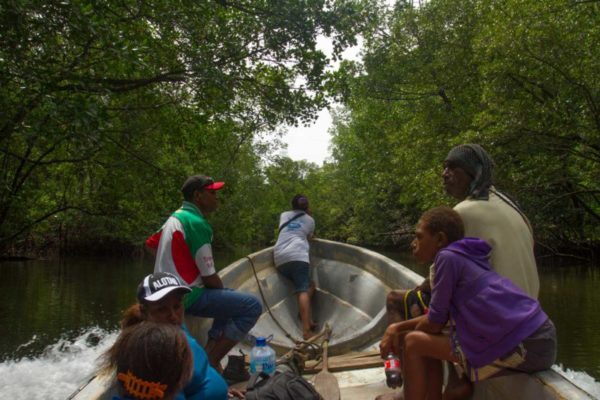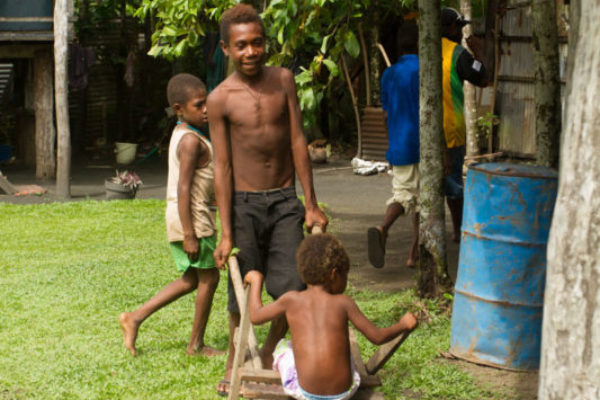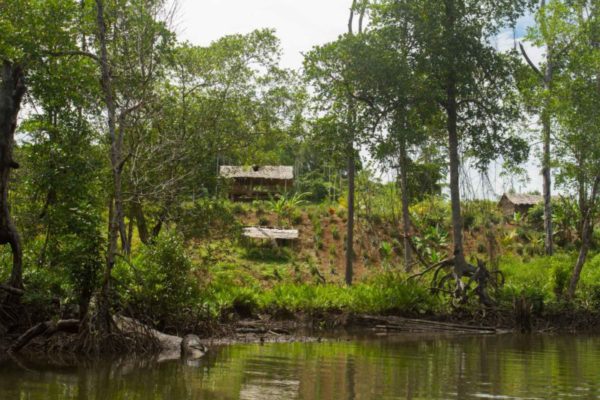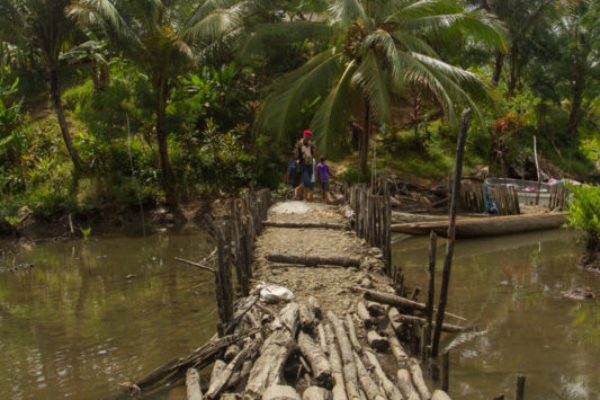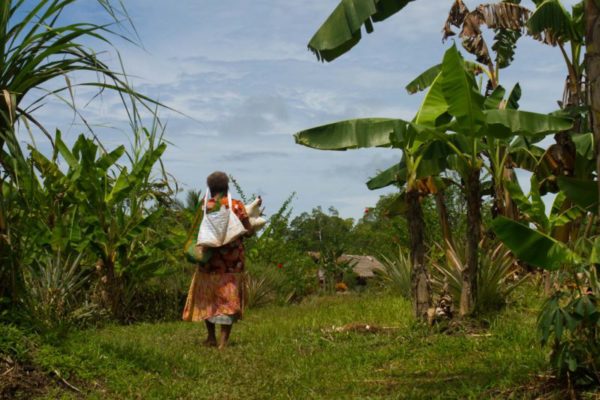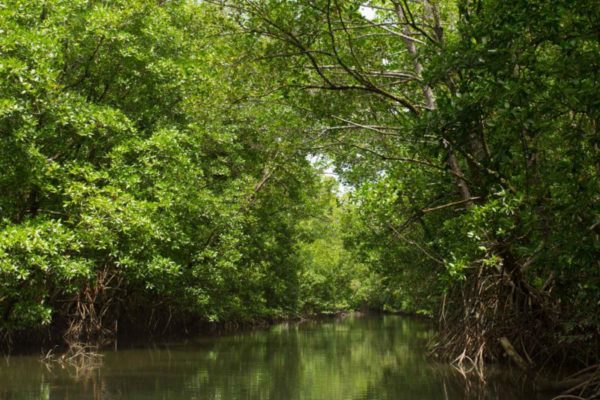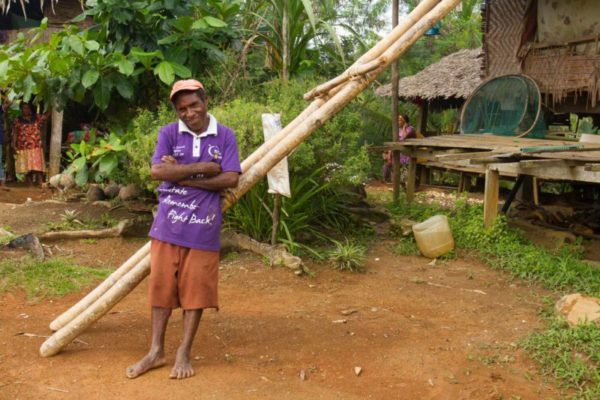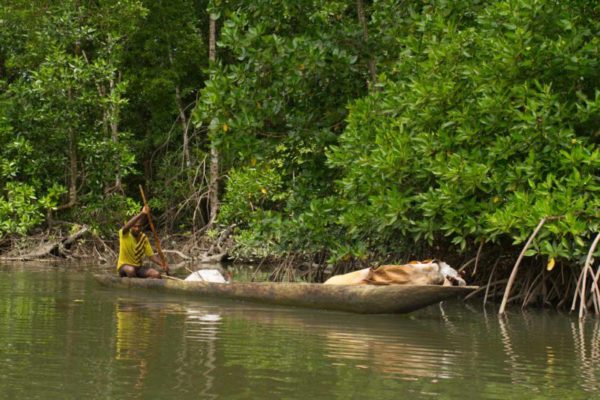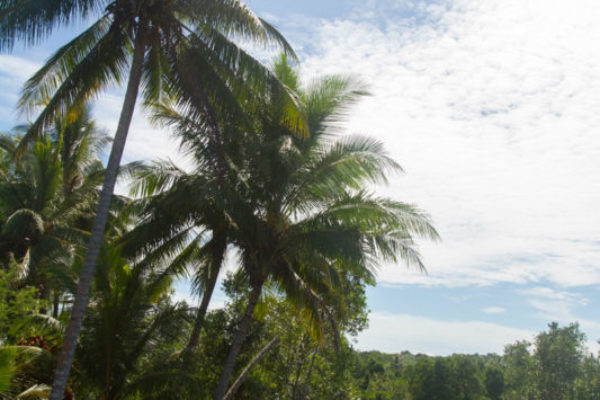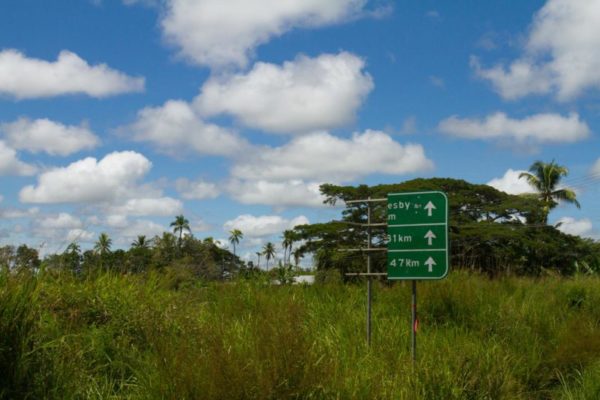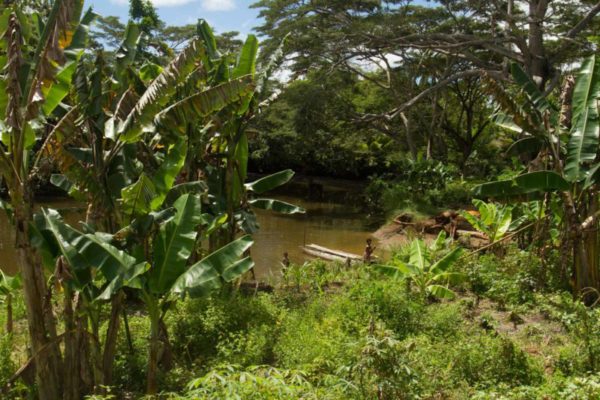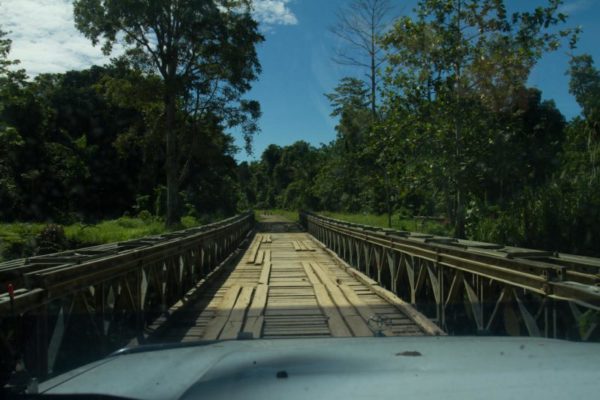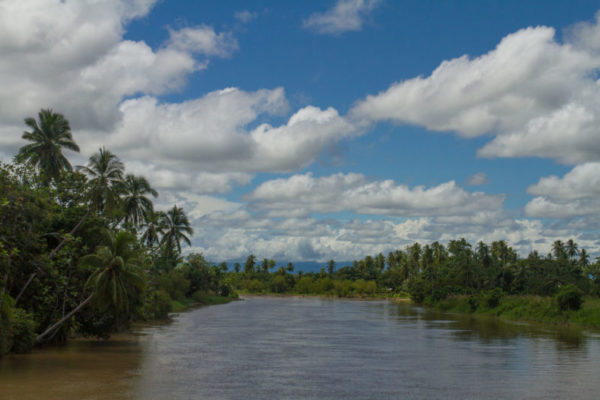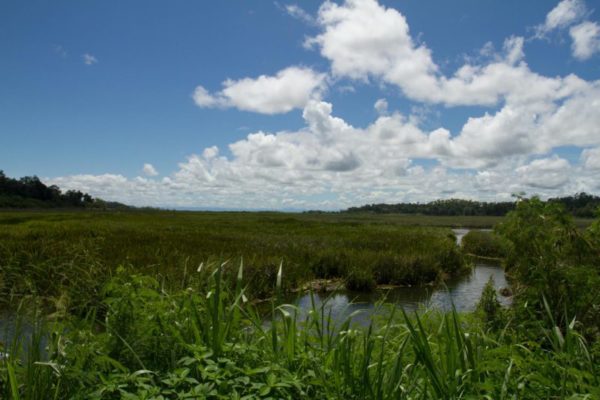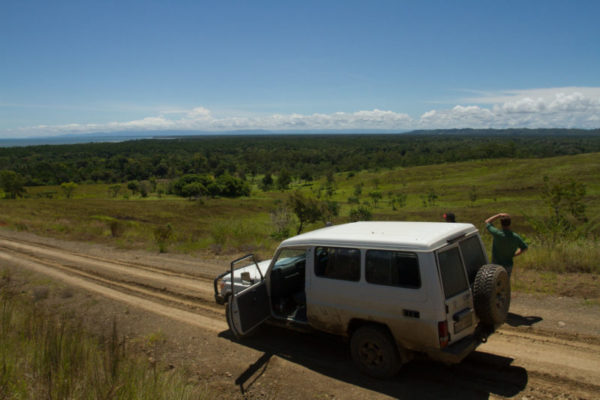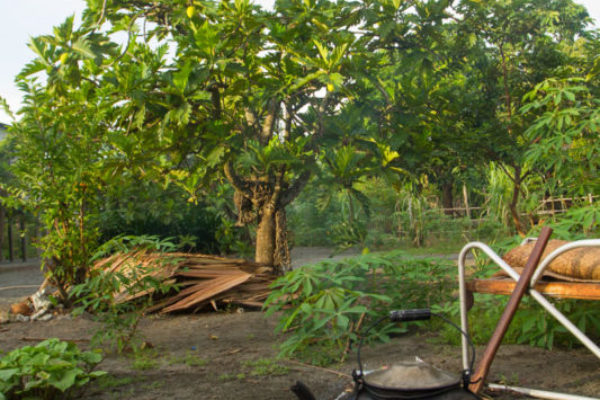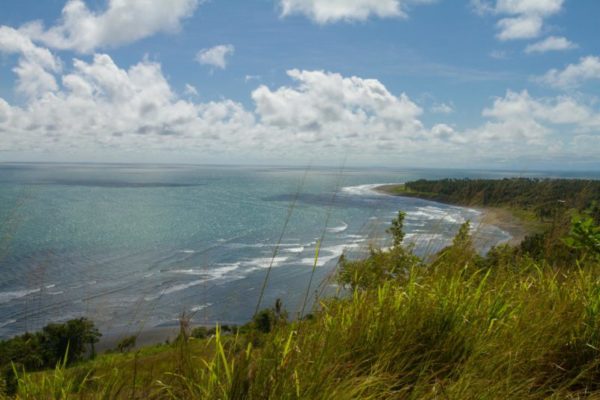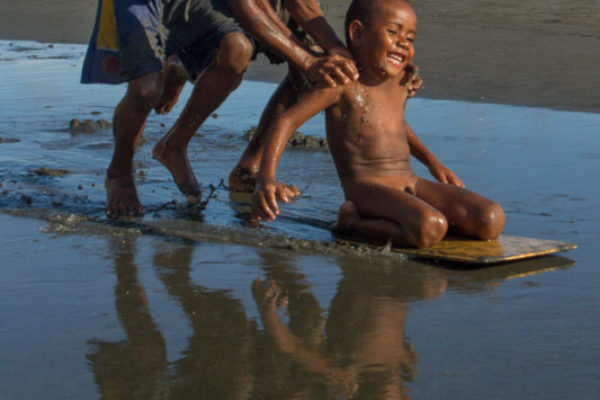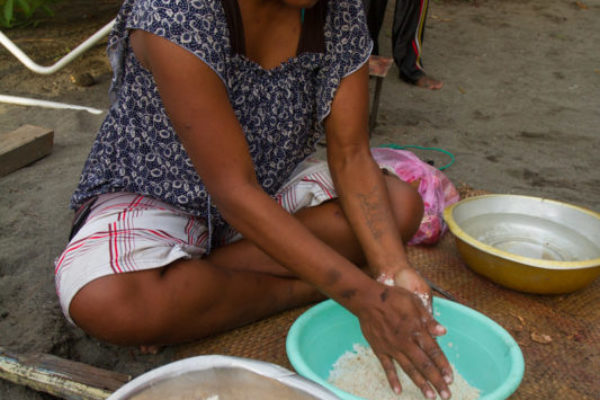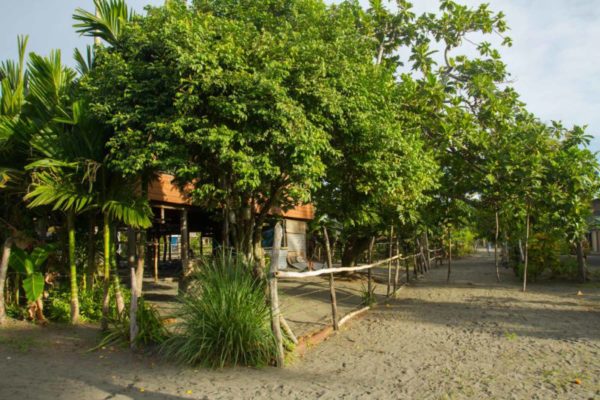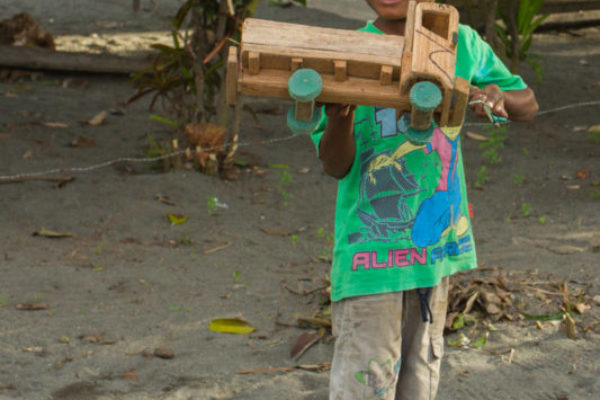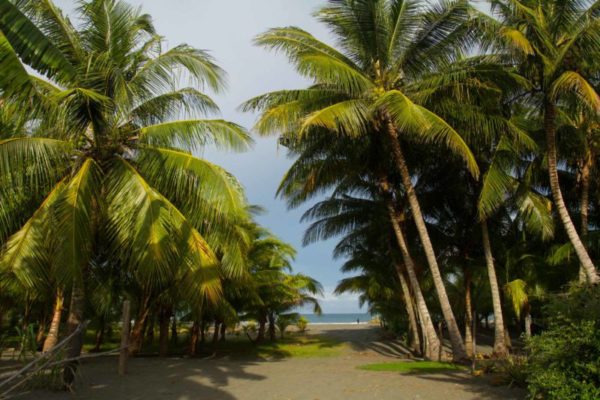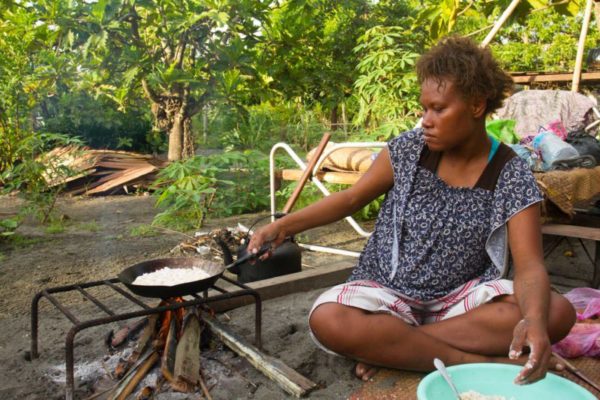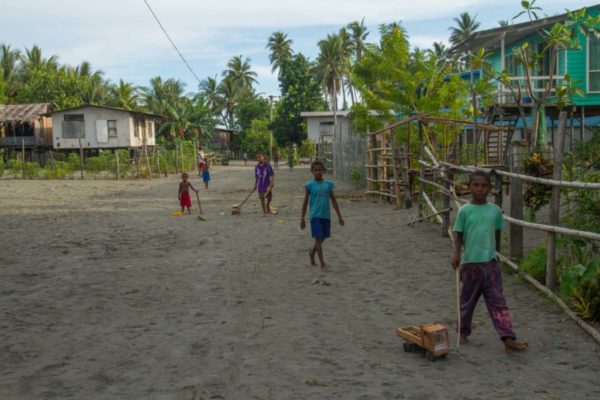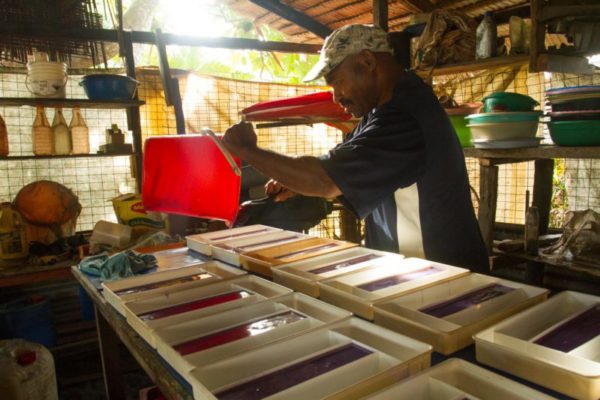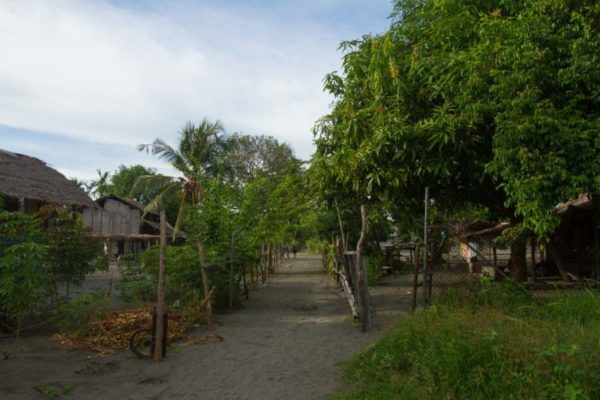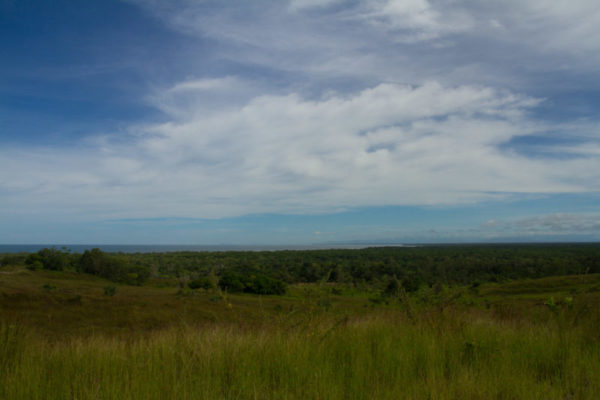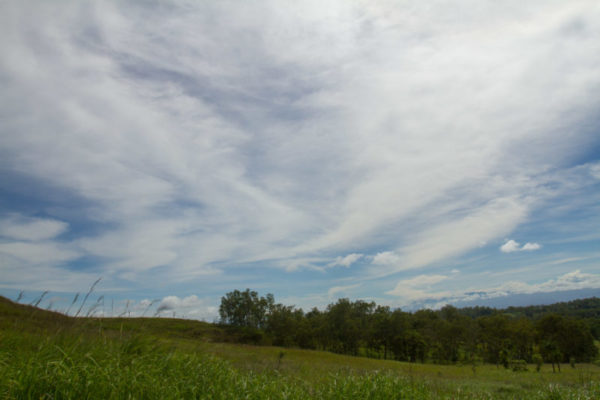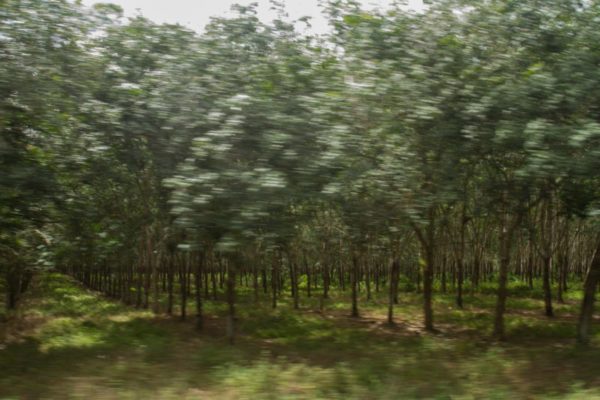Road trip to Kerema: Off the beaten track in Papua New Guinea
July 2014
We shoved our small bags under the bench seat of the long back Land Cruiser, next to the first aid kit. The car jack and spanner were neatly tucked to the side and the ten-litre water containers were pressed against the back of the seat. The cooler box in the middle was filled with ice and a few soft drinks, and the small music player was sitting on the dashboard. The tank was full, the tyre pressure checked. The six of us piled into the car and waved goodbye to our friends; it was time to start our road trip from Port Moresby to Kerema.
Kerema is the capital of Gulf Province in Papua New Guinea, about 350km from the nation’s capital, Port Moresby. When my friend Kevin and I were looking for directions, we typed “Kerema” into Google Maps and up came one thin yellow line that ended abruptly in the middle of no-where: that was Kerema. We were surprised it was even on the map.
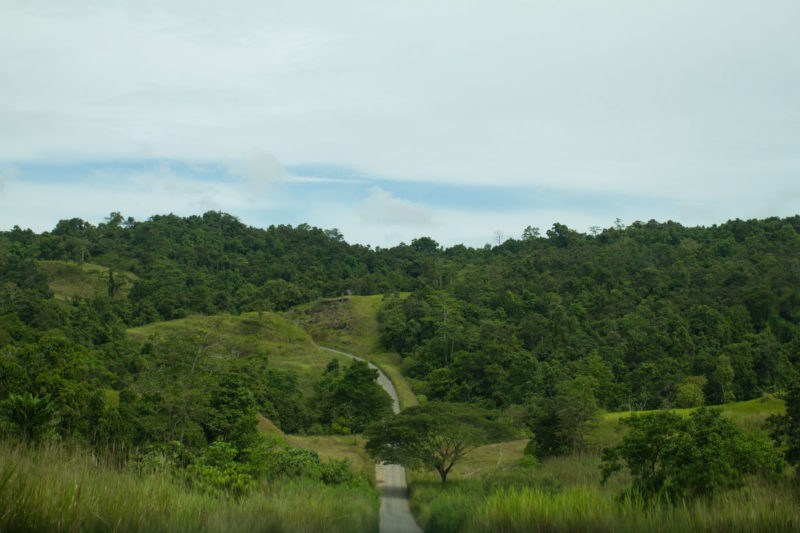
The long road to Kerema begins.
Our reason for going was unique. Years ago, and quite serendipitously, I met a man named Robert Oeka while running errands in downtown Port Moresby. Unknown to me at the time, Robert is one of Papua New Guinea’s top musicians, famous throughout the South Pacific for his songs about Gulf Province. On this particular day, while I was singing along to a CD in the car, Robert asked if I would be interested in recording a song with him. Always up for an adventure I said yes and what followed was a rollercoaster ride I could not have imagined.
Within a couple of weeks we had recorded our song, Solwara Mangi, which I sang in the local tok ples (language) of Robert’s village, Iokea. A few weeks later we filmed a music video and within a few months, both the song and video were hits on local media outlets. Over the course of the next year we started doing radio interviews, appeared in the newspaper, and eventually started performing in concerts across Port Moresby. Robert and I sang songs about Gulf, Kerema Yu No Save, Mi Save Luvim Yu and Skere ko fa and in 2014, we won the PNG Music Award for ‘Best Duet of the Year’. After all this, we decided it was time to visit Gulf and now here we were, driving down the bumpy road to Kerema.

The dirt road winds its way past Malalaua on a picture perfect day, the clouds seemingly outlined on the canvas of the sky.
To put it simply, the road was long: it took us nearly nine hours to travel the 350km. We crossed countless one-lane bridges over flowing rivers, where women were washing clothes and men were fixing wooden canoes. We passed through rolling hills lined with rubber tree forests and great open plains that held the expanse of the blue sky. We passed through countless small villages where the stilted houses were peeking out from behind the trees, and the children waved excitedly as we passed.
The road was surprisingly good up until Malalaua and then it took a turn for the worst. Between construction and mud, deep rivets and potholes, it took us almost three hours to get through the last 100km to Kerema, which explains why it feels like one of the most remote places in the country. But we managed to get through and were greeted by the beautiful ocean stretching out across the Gulf shoreline.
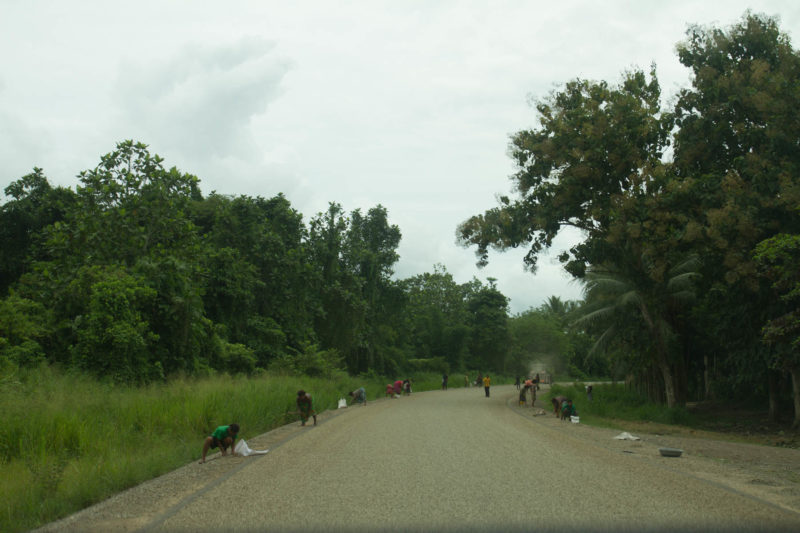
Local community members help to build the new road that winds through Gulf Province.
Kerema is an interesting little town with a lot of charm. It has a small airport and a run-down hospital, a few guesthouses that seldom have running water, a radio station, a sports field, and an excellent market that leads to the shore. We stayed in the Catholic Guesthouse that offered simple rooms, a much-needed fan, and a gorgeous sunset view of the bay.
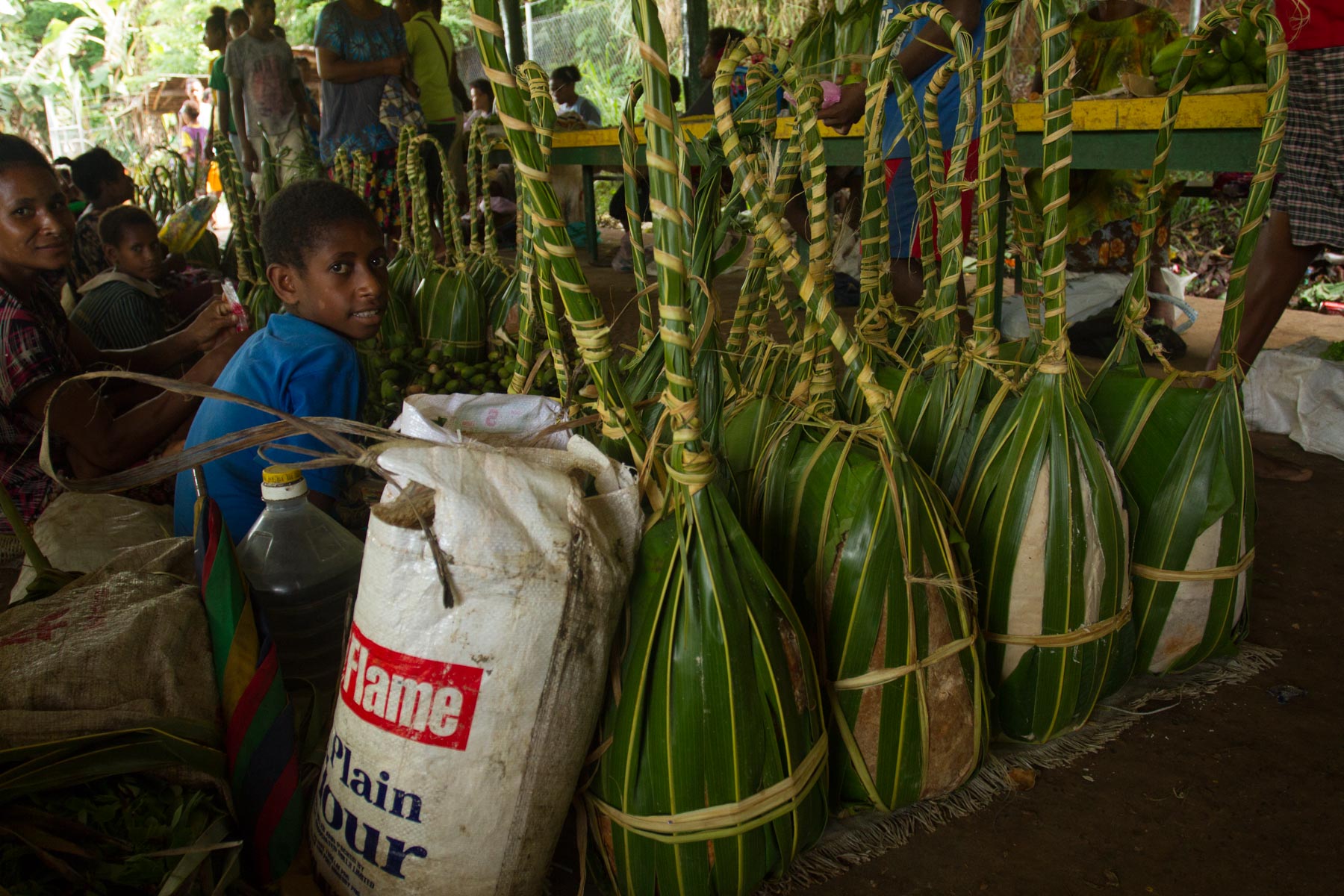
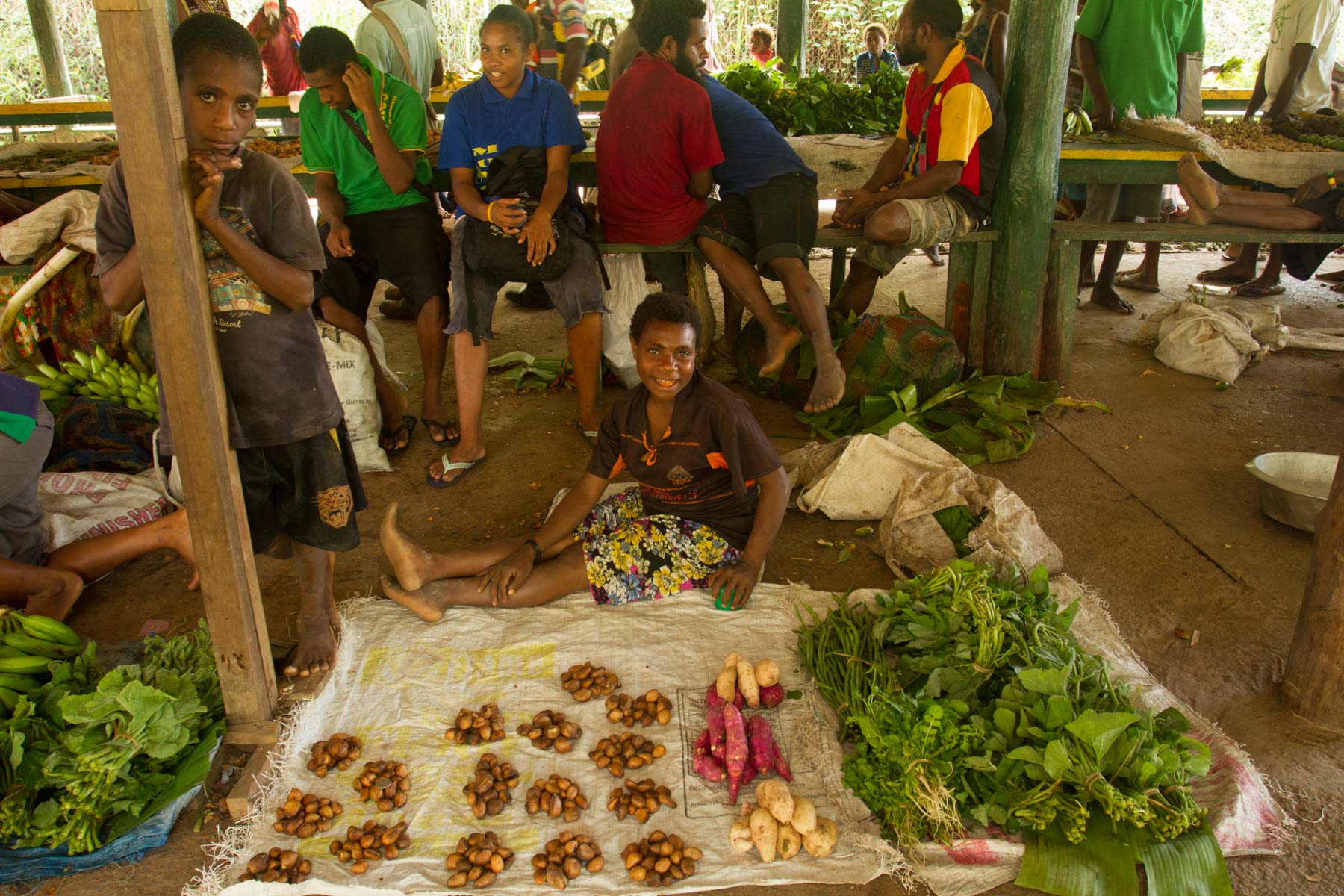
Early the next morning we made our way down to the black shore of Kerema and piled into a small banana boat to start exploring. One of the lines in Robert’s song is about where the ocean meets the river, and under the steady hand of our skipper, we were expertly guided through the surging waves of the ocean to this particular spot.
We then took the banana boat down the mangrove lined river, following its turns and curves. We stopped in what seemed like the middle of no-where and walked across a bridge made of poles to reach the land. Here we were introduced to a man who owned a pineapple farm and a chicken business. He told us how he encouraged landowners to use their land sustainably and not sell their trees to the loggers encroaching in the area. They treated us with gifts of pineapples and coconuts, sticks of prawn sago and a live chicken to accompany us on the boat ride home.
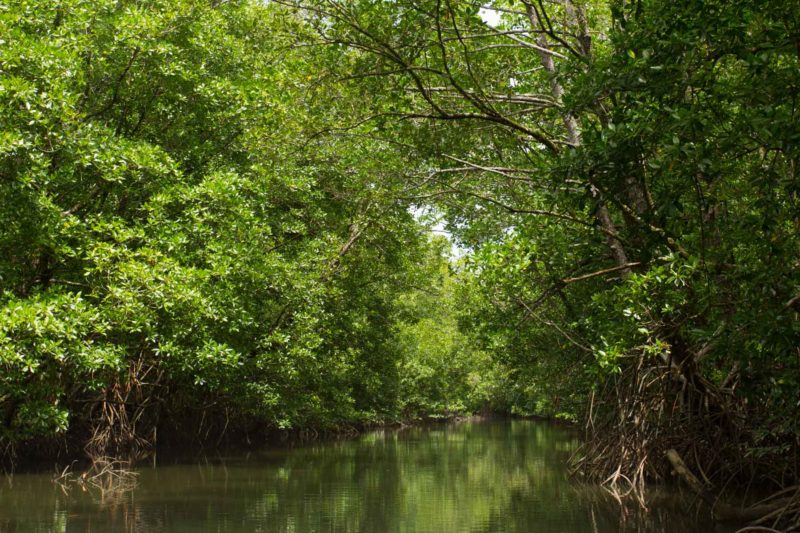
Mangroves line the river as we wind our way through.
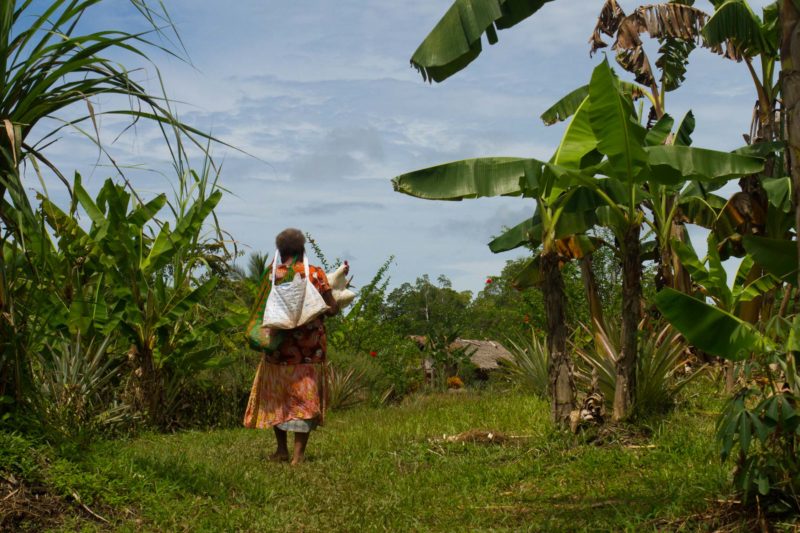
A typical day: a woman carries a chicken in her arms and two bilums on her head as she walks home to her village.
After two nights in Kerema we continued our road trip to Iokea village, Robert’s birthplace and traditional home. We pulled off the main road and stumbled our way down a dirt track that seemed to take forever, and finally reached the plateau that leads to the shore.
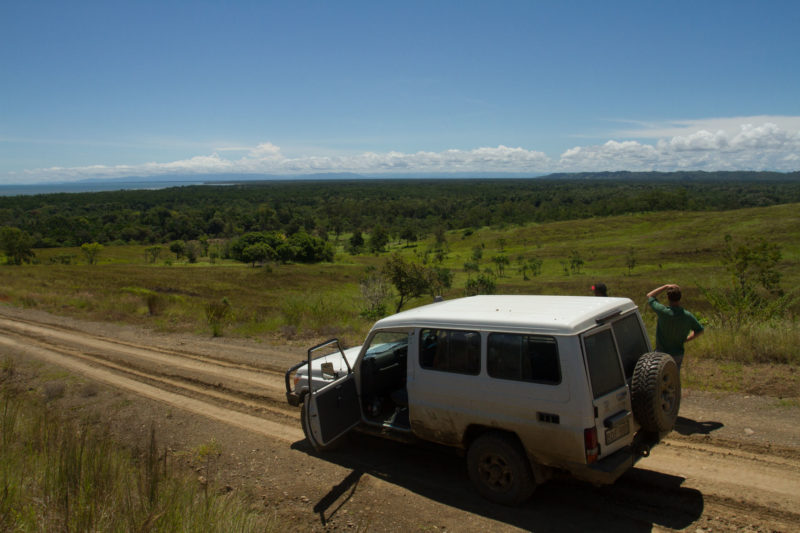
Stopping for a break to look over the spectacular valley leading to Iokea.
We were welcomed into the village with open arms. Children embraced us with hugs and smiles, beautiful woven hats and fans made in the traditional Gulf fashion, and cups of lemonade made fresh from the trees growing in the back. The poles of the stilted houses were decorated with bright flowers and we were overwhelmed and humbled by the hospitality shown to us.
We spent the day exploring the village, meeting Robert’s friends and family, and walking along the sandy paths. We had a barbeque on the beach and swam in the warm ocean water with all the children that came to join us. We stayed to watch the gorgeous sunset and leapt into the crimson sky to take silly photos.
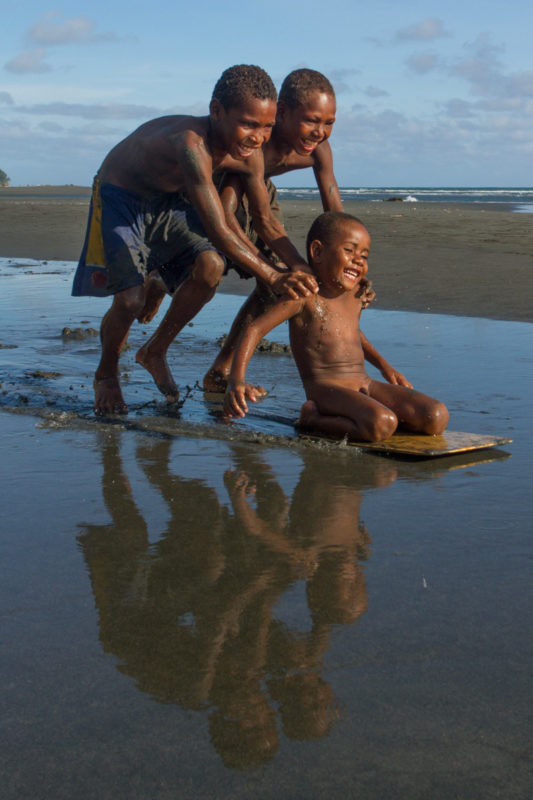
A slippery happiness: three bays play on the beach of Iokea village, a moment of delight shared by all. Photo won first place in the Papua New Guinea Amateur Photography Awards 2016.
That night we got a true sense of life in the village. With no modern services available, we collected water in a bucket from the well and washed behind the corrugated iron walls of a simple, open-aired ‘bathroom’. One of the children stood to the side and held a torch for us to have light. We drank sweet tea made on a wood fire and ate biscuits, telling stories under the stilted house long into the star-filled night, and slept on a mat on the floor.
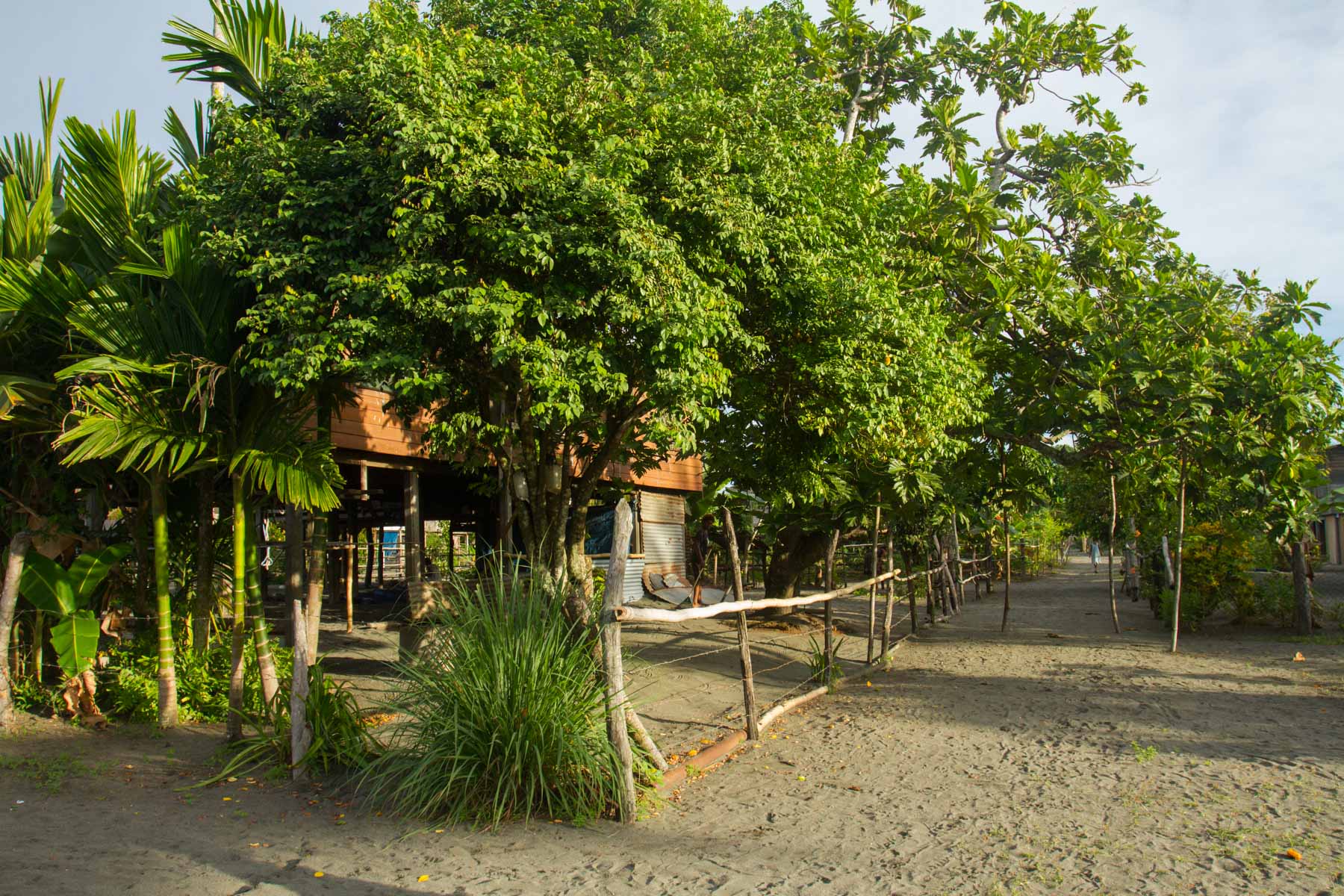
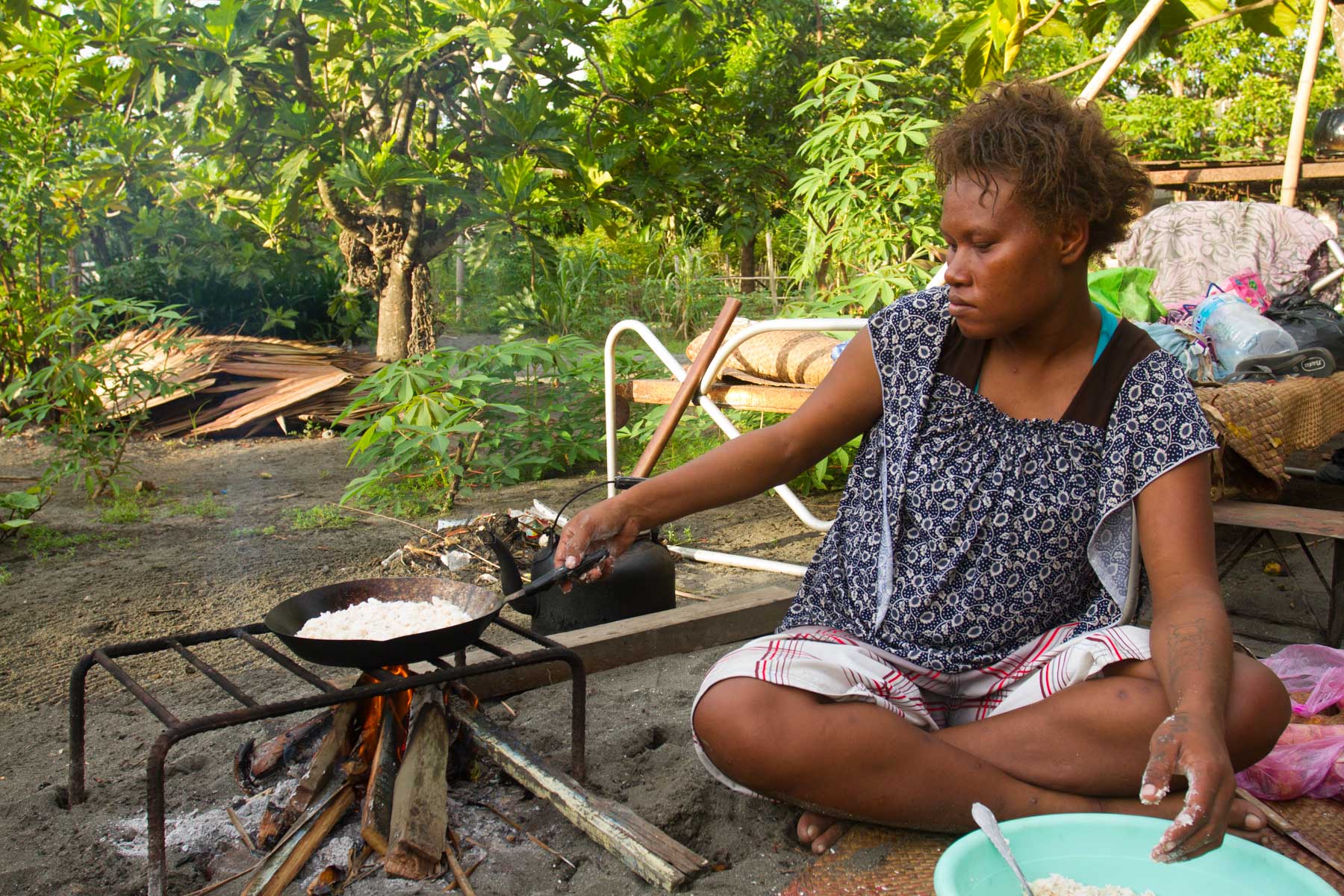
In the morning we were given a lesson on how to make coconut sago and enjoyed a cheerful and typical breakfast with the family. After a final walk through the village and more time with family and friends, we bid our farewell and started the journey home.
The road home always seems longer and we arrived back in Port Moresby in the late afternoon. We dropped off our fellow adventurers and returned to our apartment on Ela Beach, grateful for the modern conveniences that we so easily take for granted. As we looked across the bay that evening and laughed at all the stories of the trip, Robert’s songs came alive through our memories. We were no longer strangers to the beautiful Gulf Province, we were part of it, and this remarkable experience was a new song waiting to be written.

